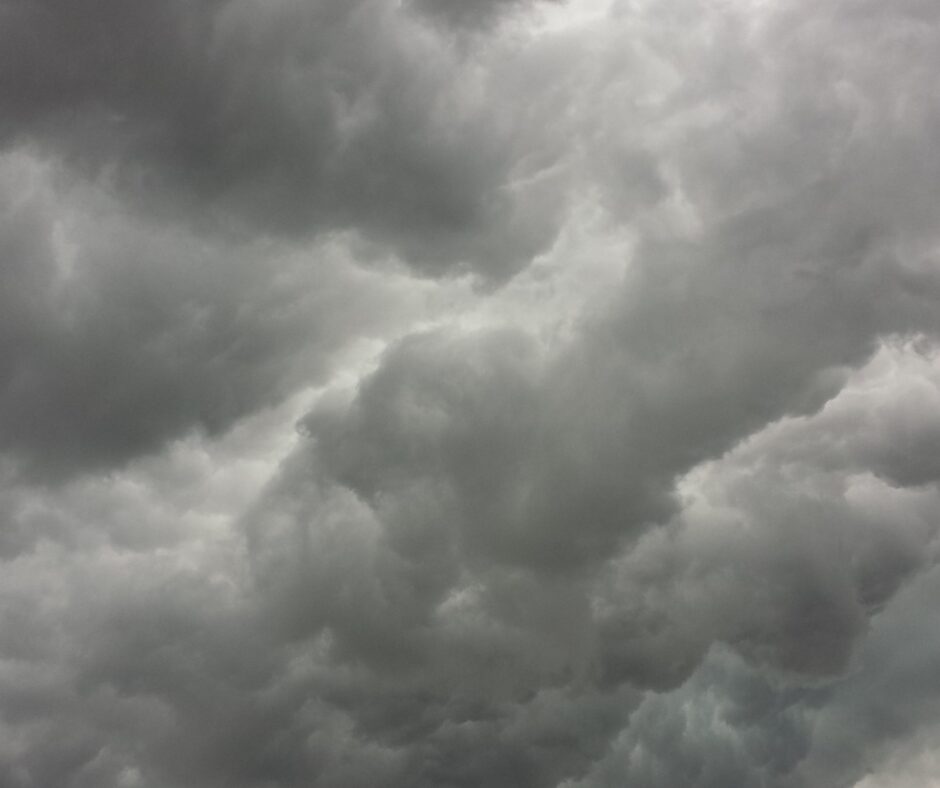Health Protection
Thunderstorm asthma


During grass pollen season (1 October through to the end of December) people may notice an increase in asthma and hay fever. It also brings the chance of thunderstorm asthma.
Thunderstorm asthma is thought to be triggered by a unique combination of high amounts of grass pollen in the air and a certain type of thunderstorm. For people who have asthma or hay fever this can trigger severe asthma symptoms.

Who is most at risk of thunderstorm asthma?
- people with asthma
- people who have had asthma in the past
- people with hayfever who may or may not have asthma.
Even if you don’t think you have asthma or hay fever, don’t ignore symptoms like wheezing or shortness of breath you might have undiagnosed asthma which also puts you at risk. See your GP.
Protecting yourself and those in your care from thunderstorm asthma
You can protect yourself and those in your care by following these simple steps:
- If you have asthma, have a check-up with your GP and discuss what you can do to prevent your asthma from worsening and what to do if it worsens.
- Take your asthma preventer medication as directed, even when you are symptom free. Only one third of people with asthma who were admitted to ICU in the 2016 thunderstorm asthma event were on preventer medication.
- Carry your reliever and know how to manage an asthma attack.
- Follow your asthma action plan or use the 4 steps of asthma first aid.
- Monitor the epidemic thunderstorm asthma risk forecast on Vic Emergency.
- Where possible, avoid being outside during thunderstorms from October to December – especially avoiding the wind gusts that come before the storm.
Know the signs of an asthma attack and asthma first aid
If you or someone else are experiencing any of the following signs, follow your asthma action plan or start asthma first aid. Do not wait until asthma is severe.
Mild to moderate signs:
Commence asthma first aid
- minor difficulty breathing
- able to talk in full sentences
- able to walk or move around
- may have a cough or wheeze.
Severe asthma signs:
Call 000 for an ambulance and commence asthma first aid
- obvious difficulty breathing
- cannot speak a full sentence in one breath
- tugging of the skin between ribs or at base of neck
- may have couch or wheeze
- reliever medication not lasting as long as usual.
Life-threatening asthma signs:
Call 000 for an ambulance and commence asthma first aid
- difficulty breathing (gasping for air)
- unable to speak one to 2 words per breath
- confused or exhausted
- lips are turning blue
- symptoms are getting worse very quickly
- collapsing
- getting little or no relief from reliever inhaler
- may no longer have wheeze or cough.
Four steps of asthma first aid
1. Sit the person upright
- be calm and reassuring
- do not leave them alone.
2. Give four separate puffs of blue/grey reliever puffer
- shake the puffer
- put 1 puff into the spacer
- get the person to take 4 breaths from the spacer
- repeat until 4 puffs have been taken. (If you don’t have a spacer, give 1 puff as they take 1 slow, deep breath and hold breath for as long as comfortable. Repeat until all puffs are taken)
- remember: Shake, 1 puff, 4 breaths.
3. Wait four minutes
- if there is no improvement, give 4 more separate puffs of blue/grey reliever, as with Step 2.
4. If breathing does not return to normal, call 000 for an ambulance
- tell the operator that someone is having an asthma emergency
- keep giving the person 4 separate puffs, taking 4 breaths for each puff, every 4 minutes until emergency assistance arrives.
Epidemic thunderstorm asthma
When a large number of people develop asthma symptoms over a short period of time, related to high grass pollen and a certain type of thunderstorm, it is known as Epidemic thunderstorm asthma.
Epidemic thunderstorm asthma events are uncommon and don’t occur every year. Melbourne experienced the world’s largest epidemic thunderstorm asthma event on 21 November 2016, with thousands of people developing breathing difficulties in a very short period of time.
Epidemic thunderstorm asthma events are thought to be triggered by a unique combination of high grass pollen levels and a certain type of thunderstorm. Grass pollen grains get swept up in the wind and carried for long distances; some can burst open and release tiny particles that are concentrated in the wind gusts that come just before a thunderstorm. These particles are small enough to be breathed deep into the lungs and can rapidly trigger asthma symptoms, making it difficult to breathe.
This can become very severe, very quickly and many people may require medical help at the same time.
That’s why it’s important for people with asthma or hay fever to know about thunderstorm asthma and what they can do to help protect themselves during grass pollen season.
How to know when an epidemic thunderstorm asthma event may happen:
Epidemic thunderstorm asthma forecasts in Victoria are available from 1 October 2023 to 31 December 2023 (the duration of the grass pollen season).
Download the Vic Emergency app from Google Play or the App Store and set up a ‘watch zone’ for your location to make sure you’re notified of the risk of an epidemic thunderstorm asthma event occurring. You can also visit the Vic Emergency thunderstorm asthma webpage for updates and information.
Recognising early symptoms of asthma and taking action is crucial. In an emergency, always call 000. For non-life-threatening emergencies, see your GP or call NURSE-ON-CALL on 1300 60 60 24.
